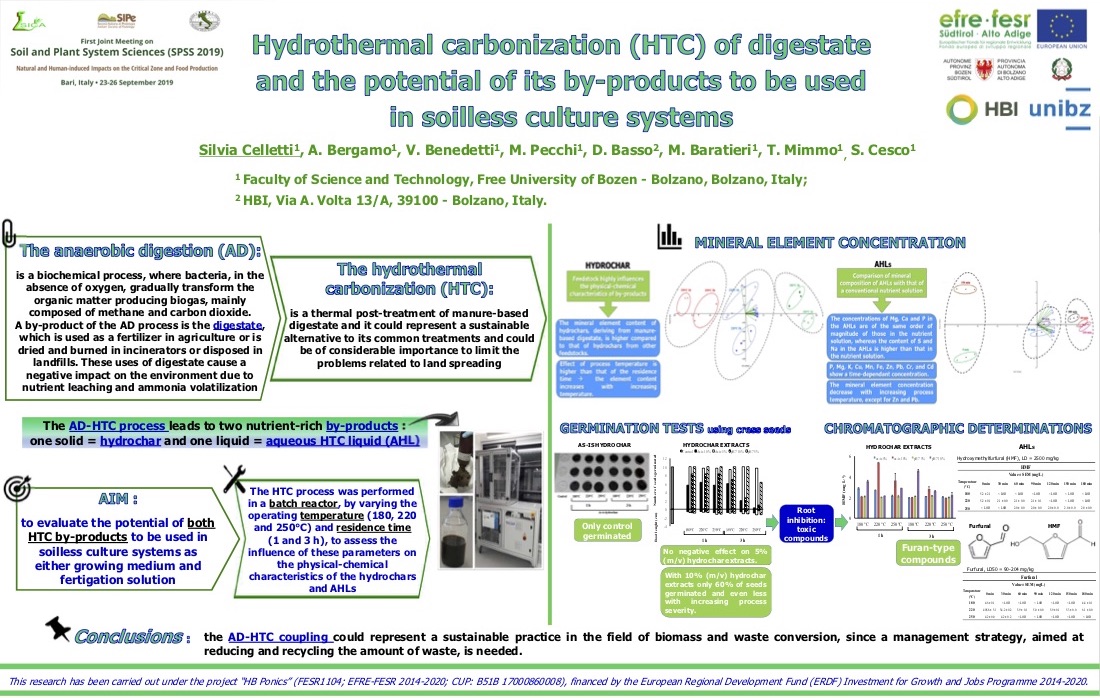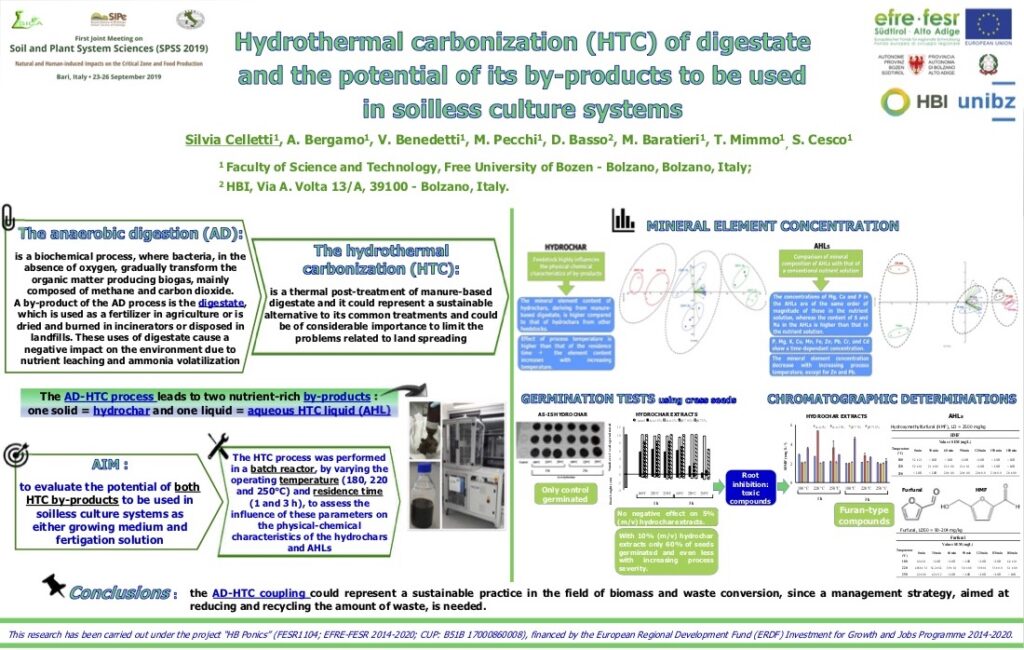The following poster, aimed at achieving the objectives of the HB Ponics project, was presented at the First Joint Meeting on Soil and Plant System Sciences (SPSS 2019) held in Bari (Italy) between the 23rd and the 26th of September 2019.
Hydrothermal carbonization (HTC) of digestate and the potential of its by-products to be used in soilless culture systems
Silvia Celletti 1, A. Bergamo 1, V. Benedetti 1, M. Pecchi 1, D. Basso 2, M. Baratieri 1, T. Mimmo 1, S. Cesco 1
1 Faculty of Science and Technology, Free University of Bozen – Bolzano, Bolzano, Italy; 2 HBI, Via A. Volta 13/A, 39100 – Bolzano, Italy
The thermal post-treatment of manure-based digestate termed hydrothermal carbonization (HTC) could represent a sustainable alternative to its common treatments and could be of considerable importance to limit the problems related to land spreading. The HTC process leads to nutrient-rich solid (hydrochar) and liquid (aqueous HTC liquid, AHL) by-products. Thus, the aim of this study was to evaluate the potential of both HTC by-products to be used in soilless culture systems as either growing medium and fertigation solution. To this purpose, the HTC process was performed in a batch reactor, by varying the operating temperature and residence time, to assess the influence of these parameters on the chemical-physical characteristics of the hydrochars and AHLs. Both HTC by-products were characterized in terms of pH, electrical conductivity, and mineral concentrations by ICP-OES. Moreover, the AHLs and the hydrochar extracts were characterized by HPLC to determine the concentration of organic acids (i.e. lactic, formic, acetic, and fumaric acid), sugars (i.e. glucose), and furan-type compounds (i.e. HMF and furfural). Germination tests with cress seeds were also performed to assess possible phytotoxic effects of the HTC products.
The results showed that the temperature of the HTC process affected the composition of the by-products more than the process time. The chemical composition in terms of macro- and micronutrients of the AHLs was comparable to that of a conventional nutrient solution. Heavy metal concentrations were below the threshold of pollutants fixed by Italian law (D. Lgs. n. 75/2010). Germination tests revealed that the as-is hydrochar was phytotoxic to cress seeds while hydrochar extracts (1:10 and 1:20 m/v) allowed the seed germination, yet with a 50% reduction compared to the control.
In conclusion, the AD-HTC coupling could represent a sustainable practice in the field of biomass and waste conversion, since a management strategy, aimed at reducing and recycling the amount of waste, is needed.
This research has been carried out under the project “HB Ponics” (FESR1104; EFRE-FESR 2014- 2020; CUP: B51B 17000860008), financed by the European Regional Development Fund (ERDF) Investment for Growth and Jobs Programme 2014-2020.
Keywords: digestate, fertigation, growing media, hydrochar, hydrothermal carbonization.
[pdf-embedder url=”https://www.hbigroup.it/wp-content/uploads/2019/10/POSTER-SPSS2019_Bari_Silvia.pdf” title=”POSTER SPSS2019_Bari_Silvia”]



